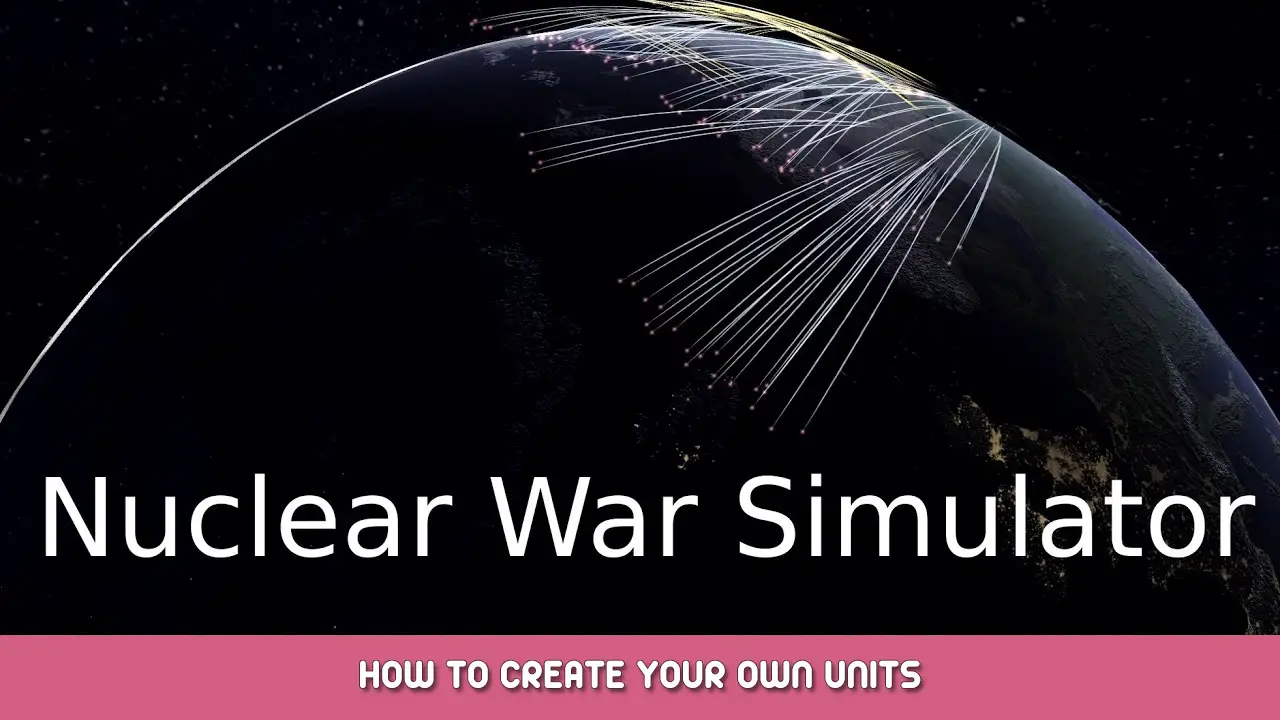This is a guide to making different and plausible custom units, be they bombers or missiles.
Wstęp
Nuclear War Simulator has an excellent “plany” systems that allows players to make devices not included in the vanilla game. Everything from classic historical systems like the SS-20 to weird and crazy wonder-weapons can be made in it. This guide is to show how to use plausible numbers when making such devices.
Warheads
Ach, warheads. Also known as “physics packages”, these are the building blocks of all nuclear weapons. They contain highly enriched uranium, plutonium, lub oba. The primary sources for this section are the 2013 Global Fissile Material Report by the International Panel on Fissile Materials and the 1995 paper “The Amount of Plutonium and Highly Enriched Uranium Needed For Pure Fission Weapons” by Thomas Cochran and Christopher Paine.
Some nuclear warheads have known (or at least stated in public sources) fissile material qualities. Mały chłopiec, a uranium-hungry gun type, had 64 kilograms of uranium in it. Fat Man, a plutonium implosion type, had 6.2 kilograms of plutonium but a similar yield, showing the greater efficiency of implosion designs.
Other stated designs of note:
South African 20 kiloton gun-type: 56 kilograms HEU
W47 600-1200 kiloton thermonuclear used in Polaris submarine missile: 2.5 kilograms plutonium and 60 kilograms HEU
RDS-4 1950s 25 Kiloton Soviet Bomb: 4.2 kilograms plutonium, 6.8 kilograms HEU
RDS-5 1950s 5-9 Kiloton Soviet Bomb: 2 kilograms Plutonium
Orange Herald 1950s British 720 kiloton fission weapon: 117 kilograms HEU
Ocena 18 Nuclear Bomb, 1950s American 500 kiloton fission weapon: 60 kilograms HEU
(1 kilogram = 2.2 pounds)
The 2013 GFMR has this section on representative material requirements:
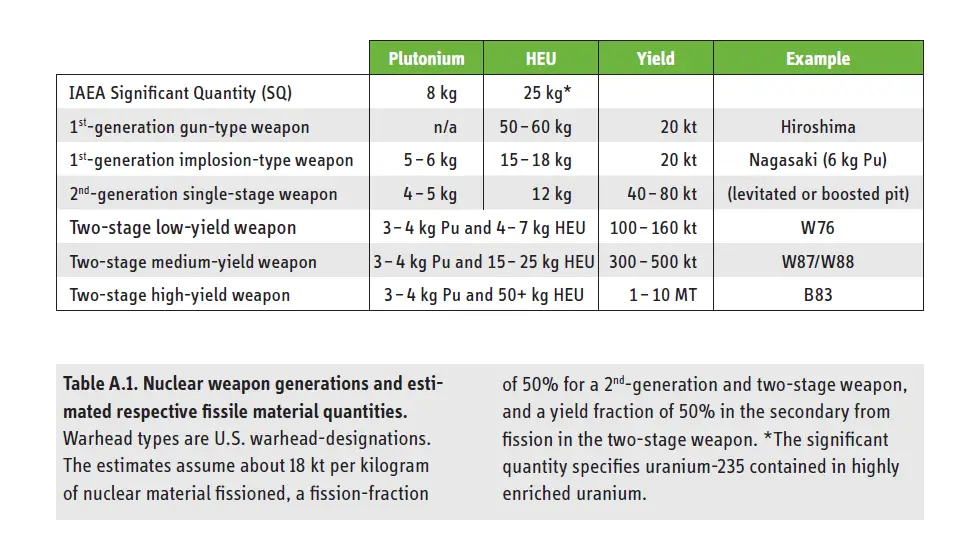
This should be sufficient for warheads specifically based on a historical type.
Now for the fun part: The Cochran/Paine paper has these tables theorized for what a nuclear nation with “Niski”, “średni”, Lub “high” technology would need for a bomb of a yield equal to or less than Fat Man/Little Boy. This is particularly relevant for countries that don’t have a nuclear program in real life but are given a hypothetical arsenal in-game.
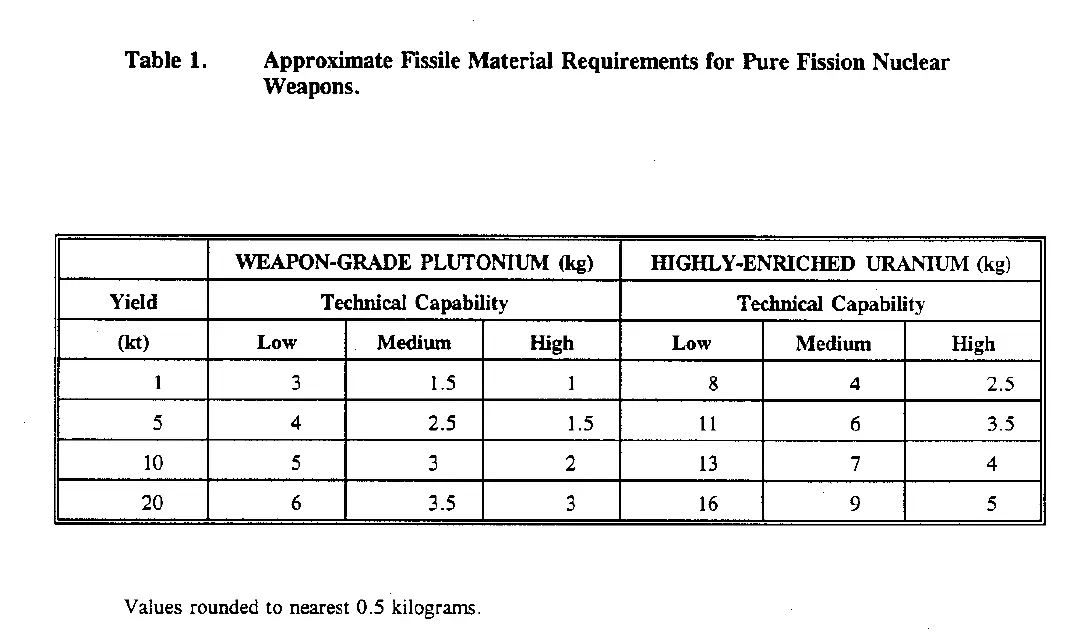
It also has these expanded tables for estimating what kind of yields would be obtained through using more materials, either HEU or PU:
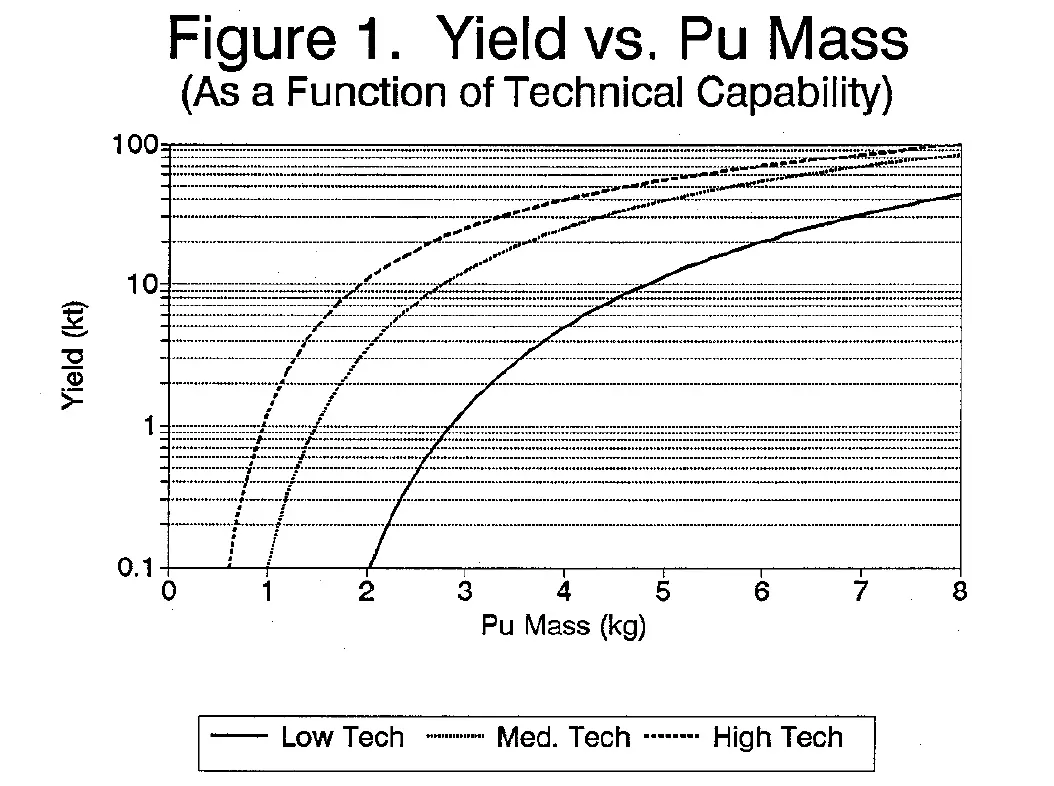
The next step (besides the arbitrary “reliability”, use whatever you feel like there) is fission fraction: Ogólnie mówiąc, pure fission bombs will obviously have a fission fraction of 100%, boosted fission has a small fusion reaction that can be represented as only 95-98% fission, most thermonuclear warheads have 50% fission, and extremely large fusion warheads have them in the single digits (the Tsar Bomba had only around 3% fission)
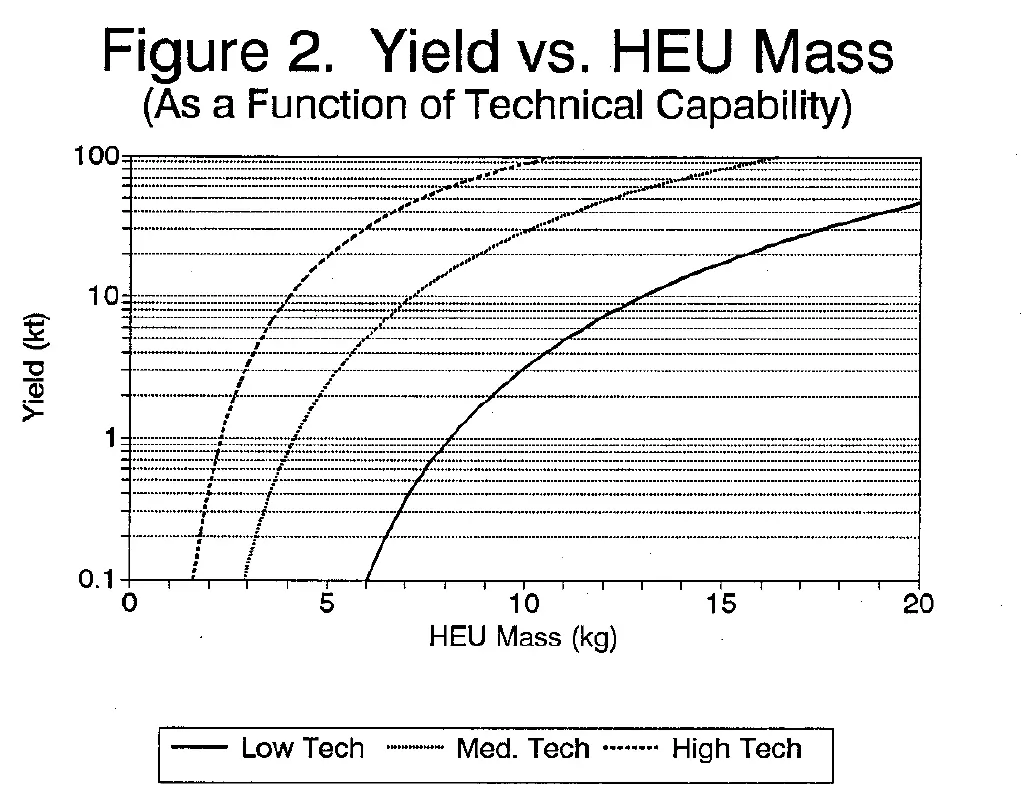
In gameplay terms, fission fraction determines the amount of fallout the bomb generates when close enough to the ground. An ahistorical but theorized “czysty” warhead with no fallout can be made using a fission fraction of 0%. Podobnie, a dirty bomb can be made by increasing the fission fraction beyond its historical norm like using a 90-100% fission fraction for a salted multi-megaton thermonuclear warhead.
Gravity Bombs
Gravity bombs are pretty self-explanatory. Their CEP (circular error probable) can be adjusted beyond the game’s good default of 300 meters in either direction. Lower simulates a better-aimed/guided bomb while higher the reverse, like a bomb dropped from high speed and altitude or with a less capable bombsight (the Mach 3 B-70 Valkyrie had a target CEP of 1.5 kilometrów, na przykład)
Slowing bomb fall speed is used to simulate a parachute slowed bomb, as most early nukes were. This gives the dropping plane more time to escape, a necessity when dealing with truly monstrous devices.
Cruise Missiles
Cruise missiles need a speed in meters per second (there are many good converters out on the internet), a target altitude (most fly either very high or very low to avoid interception) and range in meters (so multiply by a thousand to get a range in kilometers)
Historical CEP ranges from 11 kilometers for World War II era V-1s (better hope the warhead or target is big) Do 3-5 kilometers for early Cold War guided missiles like the AGM-28 Hound Dog to single digit meters for modern precision missiles.
Ballistic Missiles
Ballistic missiles are also pretty self-explanatory, although they have the ability to carry MIRVs, or multiple warheads. Ranges can be pretty easily found for existing missiles.
Speculated ballistic missile accuracy levels:
- World War II V-2: 6-12 kilometrów
- Early Cold War ICBM (Atlas/R-7): 3.7-5 kilometrów
- Early Cold War theater missiles (Redstone, Scud A): 300-1000 metrów
- Modern ICBMs: 90-300 meters per warhead
If you want to go really crazy with your ballistic missiles, there are a pair of online calculators. One is good for theater missiles limited by size and helps determine range. The other is good for ICBMs and determines payload (just view it as slightly to somewhat higher than the LEO setting), good for seeing how good a “package” or how many MIRVs it can carry.
Patarames Ballistic Missile Calculator, good for theater missiles and range
Launcher Calculator, good for ICBM payload.
For the Launcher Calculator, either solid or a non-LOX storable liquid fuel is needed for a viable ballistic missile.
Delivery Platforms
Both cruise and ballistic missiles can be carried on submarines, surface ships, in missile silos, aircraft (even ICBMs!), or in mobile transporter-erector-launcher vehicles (or TELs). The defaults are pretty good for just getting a platform into the game, but I still have a bit of advice for customization.
- You need bases for these. Airbases for bombers, mobile bases for TELs, silo control centers for fixed installations, and sub bases/ports for submarines and ships.
- The pressure resistance settings can be changed for different types of launchers, especially silos. Soft launch pads can be simulated by “silos” with very low resistance, and the resistance can be increased for super-hardened silos carved out of mountains (which was actually proposed.
- For aircraft, it’s important to have a range that’s dwa razy the distance to the intended maximum target, as the range in-game simulates the trip there and back.
To wszystko, co dzisiaj udostępniamy w tym celu Nuclear War Simulator przewodnik. Ten przewodnik został pierwotnie stworzony i napisany przez Coiler12. Na wypadek, gdybyśmy nie zaktualizowali tego przewodnika, możesz znaleźć najnowszą aktualizację, postępując zgodnie z tym połączyć.
